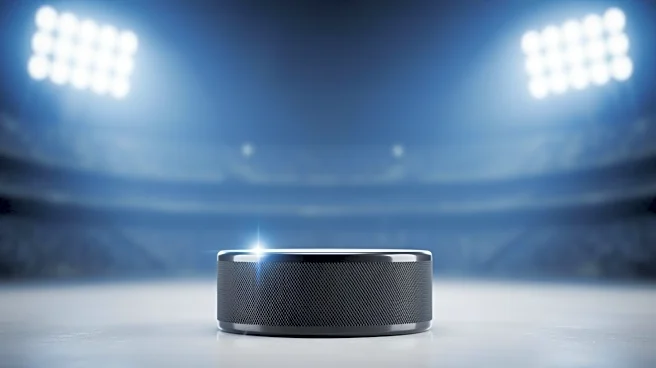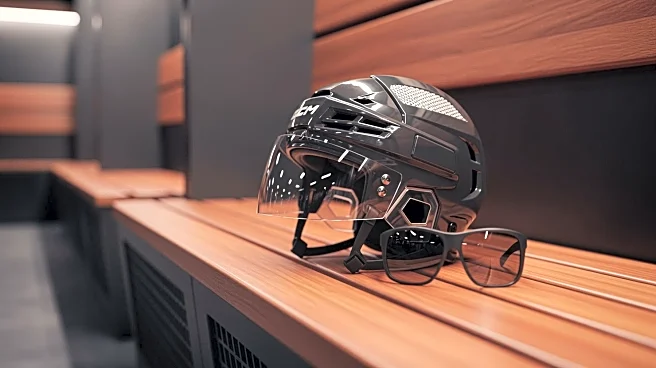What's Happening?
The National Hockey League (NHL) has relaxed its dress code, allowing players to dress in a manner consistent with contemporary fashion norms. This change, part of the new collective bargaining agreement,
marks a departure from the league's previous strict suit requirement. Players are now able to mix and match materials and brands, leading to a more casual and diverse off-ice style. Teams like the Toronto Maple Leafs and Utah Mammoth have embraced this change, showcasing players' outfits on social media. This shift aligns the NHL with other sports leagues that have already embraced fashion, potentially opening new avenues for player expression and league branding.
Why It's Important?
The NHL's decision to relax its dress code is significant as it reflects a broader trend of sports leagues integrating fashion into their branding strategies. This move could enhance the league's appeal to younger audiences and fashion-conscious fans, potentially increasing engagement and expanding its fan base. By allowing players to express themselves through fashion, the NHL may foster a more inclusive and dynamic image, aligning with cultural shifts towards individuality and self-expression. This change also presents opportunities for partnerships with fashion brands, potentially boosting the league's commercial prospects.
What's Next?
The NHL's embrace of fashion could lead to further collaborations with fashion brands and designers, enhancing the league's visibility in the fashion industry. Teams might consider hiring stylists to curate player outfits, similar to practices in other leagues. The league's approach to fashion could evolve, potentially influencing its marketing strategies and fan engagement efforts. As players continue to experiment with their style, the NHL may explore initiatives to promote fashion-forward players, leveraging their influence to attract new fans and sponsors.
Beyond the Headlines
The NHL's shift towards fashion raises questions about the league's willingness to embrace change and modernize its image. Historically resistant to change, the NHL's new dress code could signal a broader openness to innovation and cultural shifts. This development may also influence the league's stance on other progressive issues, such as diversity and inclusion. The integration of fashion into sports highlights the growing intersection between these industries, reflecting broader societal trends towards lifestyle branding and cultural convergence.











